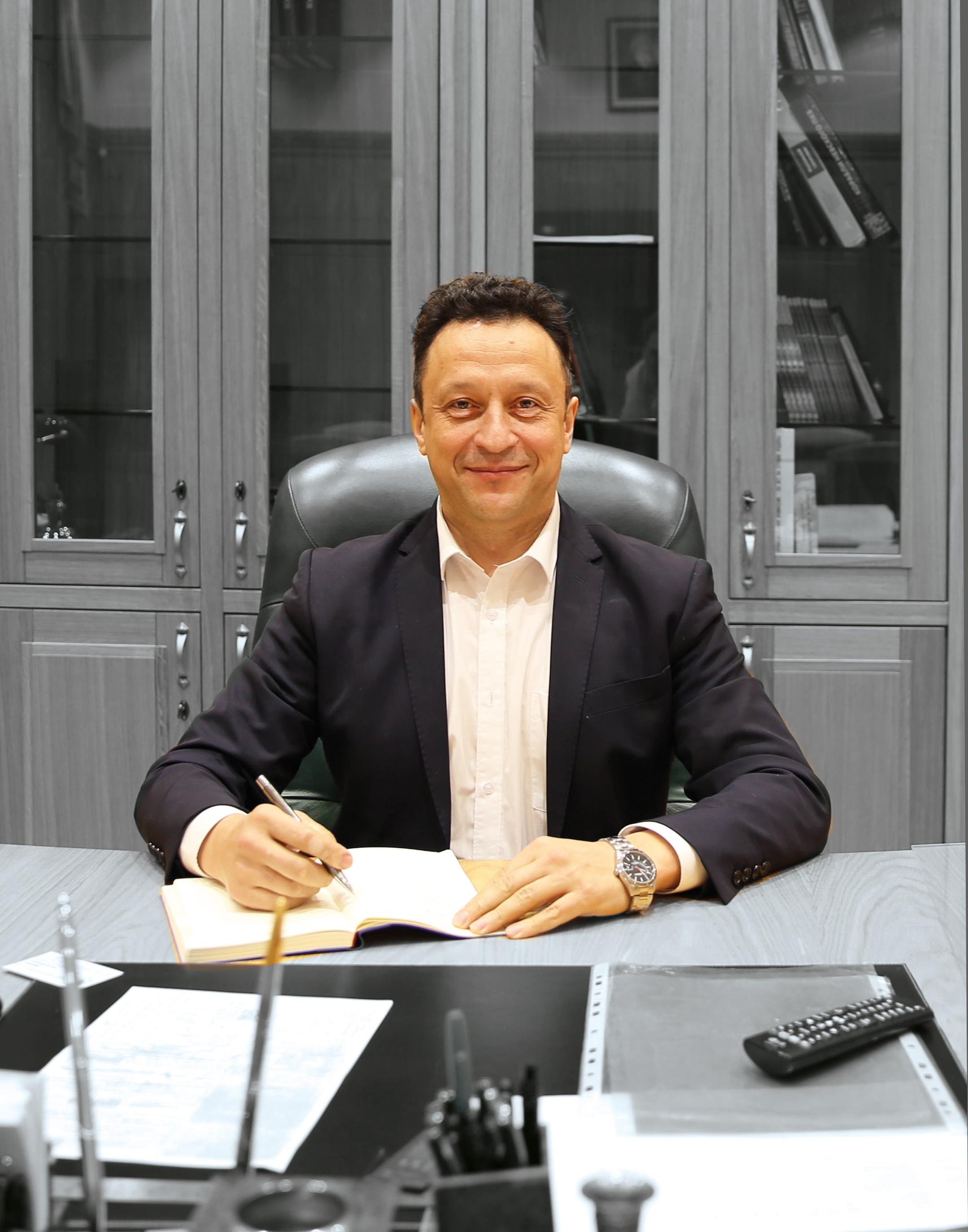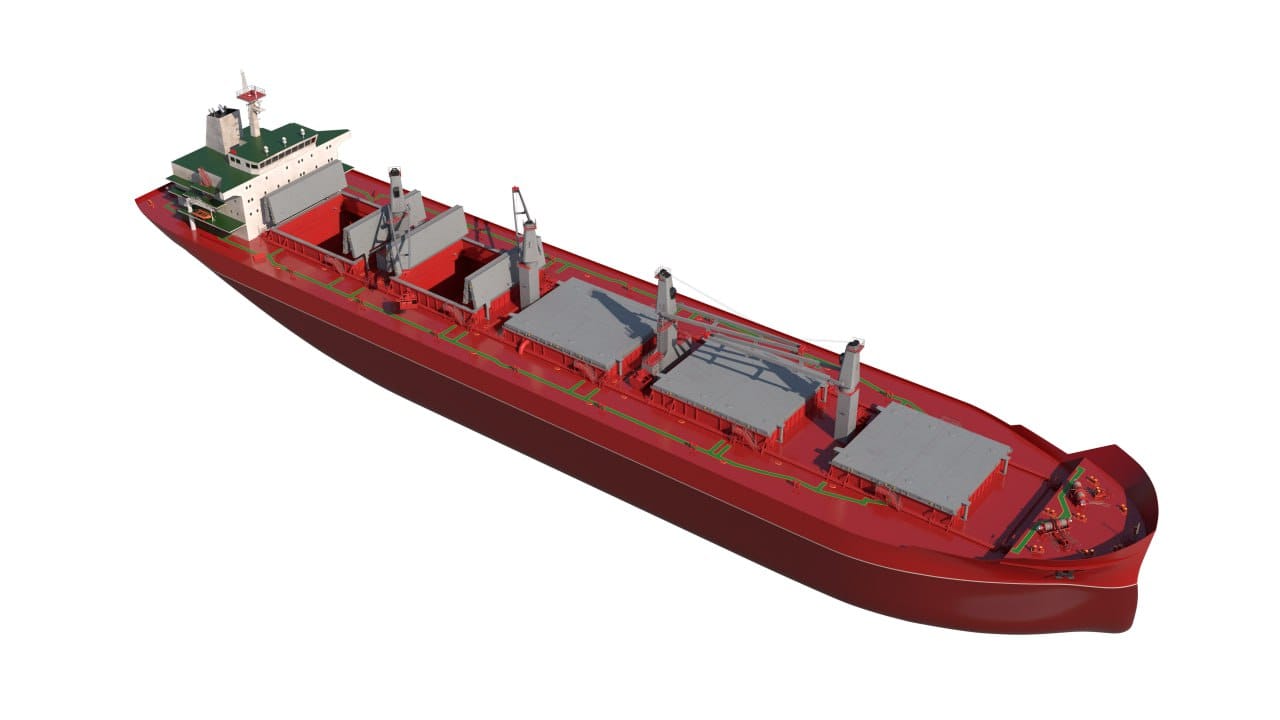
The scientific and engineering community of Russia has faced a task of providing shipowners with domestic technological solutions. Oleg Savchenko, General Director of Krylov State Research Center, tells IAA PortNews about the progress of the work on designing grain and gas carriers, about the current inability to build Azipod units and about the prospects of solving the problem with low-speed engines.
— Mr. Savchenko, is Krylov Center going to present its new developments at the NEVA 2023 exhibition?
— The keynote of our participation in the NEVA which is to be demonstrated by the general design of our stand and its exhibits is the beginning of a new era in shipbuilding, an era with the main assistance to the domestic shipbuilders to be provided by the domestic industry, domestic technology and domestic science.
Of course, we will demonstrate the results of our work achieved over the past 3-5 years through integration of the Krylov Center’s three components. First of all, we will present our scientific divisions involved in applied studies, experimental work and research in the field of new technologies for creation of major components and for construction of naval and civil ships of the new generation.
Secondly, our production will be presented at the exhibition. Krylov Center comprise four production facilities under one roof: electrical engineering facility where produce elements of unique systems; a facility for manufacture of rubber products engaged in testing of ship coating technologies; a facility for production of systems reducing electromagnetic fields and combating marine corrosion; and a mechanical production facility.
The third component of our exposition at the NEVA 2023 exhibition is related to the development of concept and technical designs of naval and civil ships. I’d like to remind that Baltsudoprokt, the country’s oldest design bureau established in 1925, is a part of Krylov Center.
— Will you present the designs of grain carriers being developed under the order of the Ministry of Agriculture?

— Yes, we will show the preliminary results of grain carriers designs being developed under a contract with Rosagroleasing controlled by the Ministry of Agriculture. These are the first Russian designs of bulk carriers of 40,000 dwt and 60,000 dwt. They are needed to ensure the exports of domestic grain.
This project is under the personal control of Minister of Agriculture Dmitry Patrushev. He repeatedly visited Krylov Center with potential shipowners able to give a professional assessment of the current work results. Their opinion does not always meet our expectations but is always constructive.
We have been set a task to complete and submit the technical design and the technology for construction of new Russian bulk carriers by this November. Thus, we have to determine which shipyards are to build the ships. To make this choice, we have our own divisions responsible for technological audits of shipbuilding enterprises and for development of a programme on awarding state orders to shipyards. We also work in close cooperation with Shipbuilding and Shiprepair Technology Center JSC.
— Can you name any shipyards that could build those bulkers, in your opinion? It is difficult to build ships of high deadweight in Russia ...
— First of all, I would like to emphasize that the construction of a series of new bulkers should be planned. Today, we cannot speak for the Ministry of Agriculture and possible shipowners about the size of a series, but we believe it should number dozens of ships.
It is very important to understand that the actual load of the few Russian shipyards able to build large tonnage ships is very high. For example, Admiralteiskie Verfi shipyard has a technological basis for such a project and they can build the lead ship. But the shipyard will not be able to build the series due to a large number of other orders. Far Eastern Shipbuilding Complex Zvezda would be perfect but its current load does not let us plan the construction there.
Therefore we are looking into development of a distributed shipyard project here, in Saint-Petersburg. The final assembling works can be performed by both Admiralteiskie Verfi and Kronshtadt Shipyard.
It is important to understand that the actual load of the few Russian shipyards able to build large tonnage ships is very high. |
— What problems with components can the new projects face?
— We deal with the problem of creating a bulker in view of the absence of an appropriate power plant. We need low-speed reversible engines, which are not in production in Russia so far.
Actually, the developments of Transmashholding are very interesting in this respect. Kirill Lipa (head of the Transmashholding – Ed.) and TMH specialists are committed to the development of Russian technology for construction of diesel engines. Indeed, the result of their work is impressive. They look further with a focus on dual-fuel diesel engines running on LNG.
A new diesel engine cannot be designed earlier than in 5-7 years. Then a prototype should be manufactured and tested after a wide range of problems with testing equipment is solved.
— Do you mean it can take a decade? Will costly and sophisticated dual-fuel engines be still needed in 10 years. Do you believe gas engines will be still in demand?
— They certainly will. Gas transportation is always accompanied by gas steaming. This gas either has to be re-liquefied and kept in the containment system, or it has to be got out, with the margin decrease, or it has to be used as a bunker fuel. As long as there are LNG gas carriers, there will be dual-fuel engines or even engines operating only on gas. Transmashholding is working committedly on this issue. No other Russian companies are able to start producing such engines earlier.
It is clear that such high-tech products require assistance from the state.
– Krylov Center is designing a gas carrier. How’s the work going?
— We developed the concept design of a domestic gas carrier in close cooperation with the division of Atomenergomash. It foresees a boiler-turbine unit with a dual-fuel boiler for gas or diesel fuel. Its energy capacity is lower than that of a dual-fuel diesel unit, hence it will require more fuel, by 30-40.
Of course, a shipowner can find this economic model not quite acceptable. But today this is the only solution for us if we are focused on increasing the country’s technological capacity. And we should say honestly: “Colleagues, you will either transport gas by our ships or you will not transport it at all.” That is not our decision, that is something to be addressed by the political leaders of the country.
— How will the problem of LNG tanks be solved after the French company GTT left the Russian market?
— In 2014, Krylov State Research Center completed R&D work on creation of a principle technology for a cargo containment system (gas containment system). The lead department in this works was the one focused on strength. They developed the technologies and explained what domestically produced materials can be used to build systems similar to those of GTT. Now, if we are set such a task it will take us about a year and a half. We have the technology and the material. There are problems with the glue but we will solve them. We need to create a test compartment, then build a test bench to test the system parameters. We understand how to conduct the tests and how to develop the required technology and the system, how to certify materials and works.
— Following the audit of Zvezda, the Ministry of Industry and Trade and Rosatom accepted Rosneft’s offer to postpone the construction of the lead Leader icebreaker for 2 years and to increase its cost. What is behind that, in your opinion?
— It is a complicated project, its design and construction is a challenge since we want to build the world’s largest icebreaker. Rosatom had justified the need for the construction of this icebreaker by the need to assist gas carriers in the eastern part of the Northern Sea Route through heavy compact ice fields such as those in the Chukchi Sea. There are alternatives, of course, but it would be great to get this icebreaker by 2027.
In general, the construction of an icebreaker is a complex technological process. Apart from the great need for skilled workers, welders, it is important to assess the state of the main production facilities since they will accommodate a new reactor plant, a new electrical system, and so on. The shipyard is able to ensure human reserves. Chinese, Indian workers may be involved. But no reserves will help if there is nothing to build the icebreaker of. The shipyard may ask for postponement of the contract implementation not only because of the hull works delay, so it is necessary to estimate the state of the main systems.
— Not so long ago you marked a problem caused by rejection of comprehensive design research, so-called concept design phase, from both military and civilian shipbuilding. Has the situation changed?
— Unfortunately not. There once was a very good Soviet technology for making decisions on designs and construction. It was based on integrated research systems, including concept design research in view of products required for the national economy or navy, for civil and naval ships. That is, you need to understand what you are going to design before you start designing. We see that this technology, in one form or another, is currently being applied in foreign shipbuilding.
Let’s take Acer Arctic in Helsinki. They prepare a project in the scope of the tender project. That is not a detailed technical design, but it represents technical appearance of a ship, its systemic characteristics, its capacity, performance, need for certain systems. In general, the project features an integrated parameter for construction, including the economic one. In my opinion, that is a sign of a new level in shipbuilding which we should strive for.
Then the work continues at a shipyard where a workshop design is to be developed. The main savings on optimization of technological solutions are ensured by the shipyards’ design bureaus.
In reality, we are often asked by a customer to build a vessel that meets certain requirements. But if customers is asked why the vessel should meet those requirements you will see if the customer is aware of the correlation between the requirements and the cost, or of the industry’s capabilities to implement those requirements?
That is an overwhelming problem of USC demanded to build civil and naval ships complying with requirements that are either impossible to achieve or need enormous industrial resources for production of something ensuring the compliance.
Therefore, if we want to change something in shipbuilding, we need to determine design organizations and provide them with the support from the industry science. We are already taking the first small steps. Under to the order of Deputy Prime Minister Denis Manturov, USC is to perform feasibility assessment of technical designs before the construction begins. A similar step is also taken in the defence industry where a newly approved document “Naval Ship Construction Manual” also sets forth an obligatory feasibility assessment of technical designs. This system lets reduce the risk of mistakes during designing but other types of mistakes are possible.
So, our way towards the creation of a gas carrier is as follows: we have developed a concept design, it can be called a preliminary design, to be estimated at the level of the state customer and potential ship owners. It is important for us to put it clear: if you build a ship in Russia, there will be no miracle today. I mean that in the coming 6-7 years a gas carrier will not be equipped with a dual-fuel engine. It will either have a gas turbine engine or a boiler-and-turbine system with certain consumption. There will be no electric steering systems known as Azipod units. There will be a direct shaftline and a gas carrier calling at a port will need tugboats for maneuvering in the port. Other technological solutions will actually appear in Russia only in 6, 10, 12 years.
It is important for us to put it clear: if you build a ship in Russia, there will be no miracle today. I mean that in the coming 6-7 years a gas carrier will not be equipped with a dual-fuel engine. It will either have a gas turbine engine or a boiler-and-turbine system with certain consumption. There will be no electric steering systems known as Azipod units. There will be a direct shaftline. |
— Is it possible to use more technologies of military shipbuilding in civil shipbuilding?
— I can assure you, although naval and civil ships are both watercraft they are based on completely different technologies, criteria, requirements. And we actually see the contrary process - the transfer of civilian technology to naval shipbuilding. That is because there was more free capital in civil shipbuilding and our achievements there were higher.
— Let’s take propellers which are being successfully designed and manufactured for the navy. Why are propellers for civil projects are still in deficit?
— Design requirements for naval ships are tougher than those for civil ships. Propellers should be not only powerful and reliable but also noiseless. Today, we have sufficient competence for designing propellers of any purpose, any class of naval of civil ships in Russia. And we do that when asked by customers to design a blade system.
— You say we cannot produce Azipod units. Why?
— Krylov State Research Center develops innovative technologies and we performed R&D for Azipod in cooperation with the Leningrad Electric Machine Plant. An Azipod was made to test gondola construction technologies, electrical machines, cooling systems, rotation, and electric propulsion system. This work makes it easier for us to create an Azipod, but it should be done for a particular vessel: a specific Azipod with specific characteristics. A GOST standard is to be developed for designing and manufacturing of Azipod units. This requirement cannot be skipped over but this work is to take about five years, I believe.
— Why so long?
— Because it is necessary to design a specific Azipod, so that the ship does not turn over and retains its maneuverability; it should fit into the hull of a particular vessel with weight distribution taken into account, and so on. It will take a year. Next, we need to develop major design solutions for this project, design an electrical machine, a rotation system, a cooling system, an electric propulsion system. The development of a technical design will take another year. Next comes a workshop design and production. Let’s suppose it will take a year. Ok, a domestically produced appears in three years but it should be tested.
— Can the entire system take into account the designing of individual systems when designing a vessel?
— Normally, we are contracted to develop a technical design of a ship with the remaining works to be performed under a delivery contract. Earlier, the construction of a sophisticated ship such as an aircraft carrier, a comprehensive state programme was launched to develop the supporting systems: electrical installations, catapults, etc. There was no technical design of a ship until technical design of components had been completed. There was no workshop design of a ship until there workshop design of components had been completed.
I wish we could revive the old system. Otherwise, we’ll continue believing in a miracle but there will be no miracle since there are no systems available, no licensed dual-fuel engines, no Azipod units. We are to develop and to produce them on our own.
More industry-related content is available on our social media pages: YouTube, Telegram,Yandex Zen




